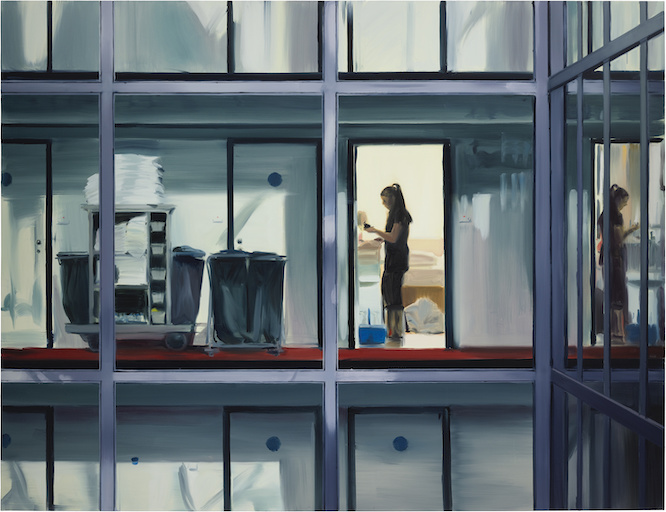Women’s Work
Women’s Work
Caroline Walker’s paintings are a reflection of modern labor conditions in an increasingly service-based economy.

Presented at a large, almost life-size scale, Caroline Walker’s paintings of women at work have a sociological quality: here are the workers at a nail salon, here are the workers at a tailor shop. Walker wants to immortalize invisible labor, to splash it across the white walls of the gallery—but unlike Diego Rivera and other New Deal–era artists, she does not paint triumphant visions of the working class. Nor are her subjects clearly posing, like the anonymous models in the Dutch masters’ domestic scenes. Instead, her relationship to the women she paints is more ambiguous, a reflection of modern labor conditions and an increasingly service-based economy.
Walker works from photographs she took in London, and her paintings show the traces of how they were made: the blurred glow of a slow shutter speed, the windows and doors through which the scene was glimpsed. In some pieces, like this one, the women do not seem to know that they are her subjects. Their labor has now twice become a site of extraction—this time on the art market.
The woman is in motion, shaped by loose, quick brushstrokes and the sterile light of a hotel room. Against the glinting steel architecture, she will continue moving on to the next room and the one after that. Her stacks of sheets and towels will dwindle and reappear. And Walker will go back to her studio, study her photographs, and mix her paints.
Lyra Walsh Fuchs is Dissent’s associate editor.






